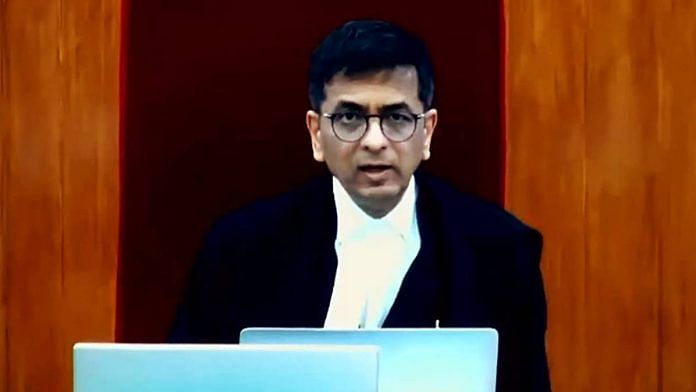On 13 July 2024, then-Chief Justice of India DY Chandrachud recited lines from a nazm by Majaz Lakhnavi—“Jo abr yahan se uthega, wo sare jahan par barsega, Har jooy-e-rawaan par barsega, har koh-e-garaan par barsega.” These verses, which are part of the Aligarh Muslim University’s anthem, resonated with those awaiting a critical decision on AMU’s minority status. They saw this as an ‘Ilhaam’ of sorts—ultima justitia, an ultimate sign of justice from the Supreme Court.
On the eighth day of hearings in February 2024, the seven-judge Constitution Bench of the Supreme Court concluded arguments in Civil Appeal No. 2286 of 2006 (Aligarh Muslim University Vs. Naresh Agarwal and Ors.) and reserved its judgment. It was a relief to petitioners and litigants hoping for a just outcome in this decades-long case arising from an appeal against the 2006 Allahabad High Court order.
AMU has one of the largest and most devoted communities of alumni and academic staff around the world, known for their unusual affinity with their alma mater.
On 8 November 2024—the last working day of his tenure—Justice Chandrachud pronounced the verdict in AMU case, another milestone in his career. The judgment overturned a key aspect of the Supreme Court’s 1967 decision in S. Azeez Basha and Ors. Vs. Union of India, which had held that an educational institution deriving its legal character from a statute is not “established” by a minority.
The AMU ruling is one of those judgments that has sparked extensive discussion, both in the media and legal circles. It addresses related questions arising from previous verdicts, including Anjuman-e-Rahmania Vs. District Inspector of Schools (1981) and the 2006 Allahabad High Court order, which had struck down an amendment to the AMU Act on the basis of the Azeez Basha judgment. During this appeal, the Supreme Court noted that the Anjuman-e-Rahmania case reference on the correctness of Azeez Basha judgment was yet to be determined, which is why the matter was referred to this seven-judge Bench.
Also read: Supreme Court’s 4:3 split keeps AMU’s minority status open. Why dissenting opinion could be key
Setting a new precedent
A careful reading of the judgment clarifies that the Bench addressed only the correctness of Azeez Basha and referred the question of AMU’s minority status to a regular three-judge Bench. As stated in para 34, “The 2019 reference order also limits the reference to the legal aspects arising from the decision in Azeez Basha (supra) and not the factual aspects of the decision relating to AMU.,” clarifying that “only the question of the criteria to be fulfilled to qualify as a minority educational institution is referred to this Bench’.
If the three-judge Bench in 2019 had referred all aspects of the appeal, this seven-judge Bench would have decided those issues as well, which are now referred to a regular Bench with the caveat that the new Bench would follow the principles laid out in this judgment.
The ruling also examined Article 30(1) of the Constitution concerning the dual requirements that minority institutions must be both “established” and “administered” by a minority, ultimately overturning the decision in Azeez Basha case.
This makes it clear that any future decision will have to consider this seven-judge Constitution Bench verdict delivered on 8 November 2024. It also mandates that “the papers of this batch of cases shall be placed before the regular bench for deciding whether AMU is a minority educational institution and for the adjudication of the appeal from the decision of the Allahabad High Court in Malay Shukla (supra) after receiving instructions from the Chief Justice of India on the administrative side.”
The judgment decisively overrules the Azeez Basha precedent, separating the question of whether an institution is established by a minority from AMU’s minority status.
This landmark judgment by Justice Chandrachud sets another milestone as it settles the basis of these litigations ongoing for over half a century. Overruling a previous Supreme Court judgment requires a nuanced approach, and this is the second recent major Constitution Bench judgment by Justice Chandrachud. On 5 November, in Property Owners Association and Ors. Vs. State of Maharashtra and Ors. (Civil Appeal No. 1012 of 2002), the nine-judge Constitution Bench overruled Justice Krishna Iyer’s 1982 ruling that allowed the state to acquire privately-owned resources for distribution under article 39(b) of the constitution.
This nuanced judicial approach is rare and sets new precedents. It demonstrates that imparting justice without getting weighed down by earlier judgments or precedents is how history is made.
Mohammad Jamshed is a former member of the Central Administrative Tribunal. Views are personal.
(Edited by Prashant)







AMU is the birthplace of Pakistan. AMU alumni provided leadership to the Pakistan movement. The university is squarely responsible for the Partition.
As such, it is in the best interests of the nation, to immediately close down this institution. The continued existence of AMU poses a serious threat to the integrity and sovereignty of the Indian nation.